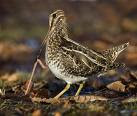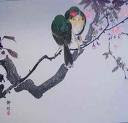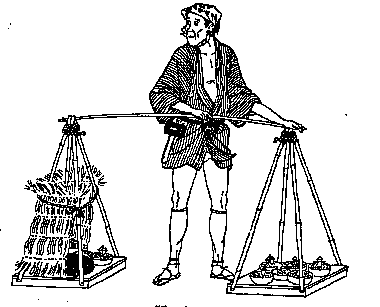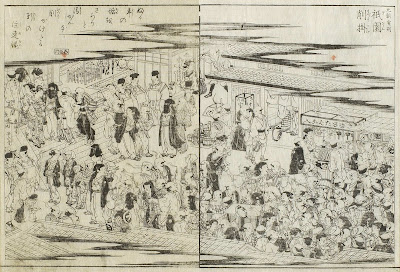[ . BACK to WORLDKIGO TOP . ]
::::::::::::::::::::::::::::::::::::::::::::::::::::::::::::::::::::::::::::::::::::::::::::::::::::
Verbs used in Kigo
Should verbs be used in haiku?
A question I am asked frequently.
Read the general answers here please:
Verbs used in Haiku
. Negative Verb Forms and Haiku .
Here I collect some SPRING kigo with verbs. I use translation with
DO
ING xyz.
It depends on the haiku wheater it will be translated as
"I do", "We do" or someone else does.
Look at the ABC index for further explanations of these kigo, many concerning plants or animals.
Gabi Greve
For verbs used in other seasons, see below.
For WRITE, WRITING, see below.
Activities in SPRING
:::::::::::::::::::::::::::::::::::::::::::::::::::::::::::::::::::::::::::::::::::::::::::::::::::::
. . . . . SPRING
going through all categories, there are quite a few
cold comes to an end, kan akeru 寒明ける(かんあける)
cold ends, kan owaru 寒終る(かんおわる)
cold passes on, kan sugiru 寒過ぎる(かんすぎる)
"spring stands up", spring begins,
haru tatsu 春立つ(はるたつ)
spring comes, haru kuru 春来る(はるくる)
spring comes closer, haru saru 春さる(はるさる)
SARU here does not mean " to leave 去る"
"it becomes spring", haru ni naru 春になる(はるになる)
cold comes back, sae kaeru 冴返る さえかえる
..... ite kaeru 冱返る(いてかえる)
freezing comes back, shimi kaeru しみ返る(しみかえる)
cold comes back, kan kaeru 寒返る(かんかえる)
february (the second month) comes to an end
nigatsu hatsu 二月果つ(にがつはつ)
..... nigatsu tsuku 二月尽く(にがつつく)
nigatsu owaru 二月終る(にがつおわる)
february goes away, nigatsu yuku 二月逝く(にがつゆく)
march (the third month) comes to an end
sangatsu owaru 三月終る(さんがつおわる)
..... sangatsu tsuku 三月尽く(さんがつつく)
april comes, shigatsu kuru 四月来る(しがつくる)
april ends, shitatsu owaru 四月終る(しがつおわる)
..... shigatsu tsuku四月尽く(しがつつく)
spring is leaving, yuku haru 行く春 (ゆくはる)
seeing spring off, haru o okuru 春を送る(はるをおくる)
::::::::::::::::::::::::::::::::::::::::::::::::::::::::::::::::::::::::::::::::::::::::::::::::::::
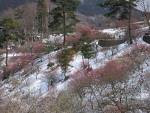 snow is still left, yuki nokoru 雪残る(ゆきのこる)
snow is still left, yuki nokoru 雪残る(ゆきのこる)
snow is melting, yuki tokeru 雪解くる(ゆきとくる)
cold weather gets a bit warmer, ite yurumu 凍ゆるむ(いてゆるむ)

ice is floating,koori nagaruru 氷流るる(こおりながるる)
:::::::::::::::::::::::::::::::::::::::::::::::::::::::::::::::::::::::::::::::::::::::::::::::::::::
taking off the hood, 頭巾脱ぐ(ずきんぬぐ)
taking off the overcoat, gaitoo nugu 外套脱ぐ (がいとうぬぐ)
taking off the warm winter underwear, doogi nugu
胴着脱ぐ (どうぎぬぐ)
:::::::::::::::::::::::::::::::::::::::::::::::::::::::::::::::::::::::::::::::::::::::::::::::::::::
preparing herring roe, kazu no ko tsukuru
数の子作る (かずのこつくる)
drying herring roe, kazu no ko hosu
数の子干す(かずのこほす)
kigo for late spring
This is done mostly in march and april.
The roe is first placed in a barrel with saltwater for five days, adding fresh salt water maybe five times every day during this time. This helps to get the roe firm. To get the delicious yellow color, the roe is then washed in fresh water and placed on straw mats to dry. It is turned over many times during the drying process and finally ready for preservation.
The fresh ones are called "new herring roe" shin kazu no ko 新数の子.
In years with a bountiful catch you could see them in all the villages along the coast of Hokkaido.
Nowadays, most of the
kazunoko is imported.
Kazu no ko 数の子 (かずのこ) herring roe
kigo for the New Year
:::::::::::::::::::::::::::::::::::::::::::::::::::::::::::::::::::::::::::::::::::::::::::::::::::::
Snow and weather-related work in spring
taking down the snow guards, yukiyoke toru
雪除とる(ゆきよけとる)
taking down the frost guards, shimoyoke toku
霜除解く(しもよけとく)
..... shimogakoi toru 霜囲とる(しもがこいとる)
..... yukigakoi toru 雪囲とる (ゆきがこいとる)
..... yukigaki toku 雪垣解く(ゆきがきとく)
fuyugamae toku 冬構解く(ふゆがまえとく)
..... fuyugakoi toru 冬囲とる(ふゆがこいとる)
yukitsuri toku 雪吊解く(ゆきづりとく)
taking down the wind guards, kazeyoke toku
風除解く かぜよけとく
..... kazegaki toku 風垣解く(かざがきとく)
..... kazegakoi toku 風囲解く(かざがこいとく)
and a few more SNOW kigo at home
yukiwari 雪割 (ゆきわり)
"make the snow forget"
by bringing sweets or fruit to a friend in January
mid-spring
yukikiri 雪切(ゆききり), yukihori 雪堀(ゆきほり)
yukikeshi 雪消(ゆきけし)
yukiwari ninpu 雪割人夫(ゆきわりにんぷ)
yukikiri ninpu 雪切人夫(ゆききりにんぷ)
yukikeshi in winter
sori shimau 橇蔵う (そりしまう)
packing away the sledge
late spring
sutezori 捨橇(すてぞり
sukii shimau スキーしまう packing away the ski
sukeeto shimau スケートしまうpacking away the skates
kuruma kumu 車組む (くるまくむ)
taking out the car
mid-spring
kuruma dasu 車出す(くるまだす)
yanegae 屋根替 (やねがえ)
putting on a new roof
mid-spring
yane fuku 屋根葺く(やねふく)
fukikae 葺替(ふきかえ)
kaki tsukurou 垣繕う (かきつくろう)
repairing the hedge
mid-sprig
kaki teire 垣手入れ(かきていれ)
.................................................................................
Farm and garden work in spring
burning the withered fields, noyaku 野焼く(のやく)
burning the paths between fields, aze yaku
kusa yaku 草焼く(くさやく)burning the weeds
aze yaku 畦焼く(あぜやく)burning the small path between the fields
azebi 畦火(あぜび)"fire in the small paths"
tsutumi yaku 堤焼く(つつみやく)burning the dikes
oka yaku 丘焼く(おかやく)burning the hills
noyaki 野焼 (のやき)
nobi 野火(のび)
yakeno 焼野(やけの)
yakihara 焼原(やきはら)
ogi no yakehara 荻の焼原(おぎのやけはら)
.................................................................................

yama yaku 山焼く(やまやく)
"burning the mountain"
yamayaki 山焼 (やまやき) mountain burning
yamabi 山火(やまび)"fire on the mountain"
Burning the weeds on the mountain slopes to make room for the new green.
observance kigo for the New Year
Nara no yamayaki 奈良の山焼
Burning the Mountain Slopes at Nara
..... Burning the mountains, o-yama yaki お山焼(おやまやき)

It was on the 11 day of the second lunar month.
The slopes of Wakakusayama 若草山 were burned.
This ritual dates back to the Kamakura period, when the slopes burned down during a warriour's fight. It is also good to help the new grass come out in spring.
In the evening, drums are beaten and then fire is set in various places, even fireworks are shot in the night sky.
Now it is relocated to the day before the ceremony of "Coming of Age" on a Sunday.
SAIJIKI – NEW YEAR OBSERVANCES
.................................................................................
yakihata tsukuru 焼畑つくる(やきはたつくる)
preparing the burnt fields
hata yaku 畑焼く (はたやく) burning the fields
hatayak 畑焼(はたやき)
shiba yaku 芝焼く (しばやく) burning the grass
early spring
shibayaki 芝焼(しばやき)
shibabi 芝火(しばび)
plowing the fields "hitting the fields" hatake utsu
畑打つ(はたけうつ), hatake kaesu 畑返す(はたけかえす)
hatake suku 畑鋤く(はたけすく)
matsu no midori tsumu 松の緑摘む (まつのみどりつむ)
late spring
..... midori tsumu 晩春 緑摘む(みどりつむ)
wakamidori tsumu 若緑摘む(わかみどりつむ)
"picking the green of the pine"
(this is also the title of a famous song)
jakago amu 蛇籠編む (じゃかごあむ)
making a gabion
A basket-like container for stones to prevent mud slides. It used to be made of bamboo, nowadays of metal.
Schanzkorb
mugifumi 麦踏 (むぎふみ)
trampling on wheat (straw)
early spring
mugi o fumu 麦を踏む(むぎをふむ)
To make it easier for making tools out of it.
umaya dashi 厩出し (うまやだし)
getting the cart out
maya dashi まやだし
clearing the stable with the carts
.................................................................................
watering the seeds, tane hitashi 種浸し (たねひたし )
. Seeds in Spring Kigo
 sowing the seeds, tane maki 種蒔 (たねまき)
with a few more related kigo
SOWING
sowing the seeds, tane maki 種蒔 (たねまき)
with a few more related kigo
SOWING
asa maku 麻蒔く (あさまく)
sowing hemp
asagao maku 朝顔蒔く(あさがおまく)sowing
morning glories
goboo maku 牛蒡蒔く (ごぼうまく)
sowing burdock
hanadane maku 花種蒔く(はなだねまく)sowing flowers
hechima maku 糸瓜蒔く (へちままく)
sowing hechima gourd
keitoo maku 鶏頭蒔く(けいとうまく)sowing
cockscomb
kyuuri maku 胡瓜蒔く(きゅうりまく)sowing
cucumbers
monotane maku 物種蒔く (ものだねまく) sowing seeds (mostly flowers)
nasu maku 茄子蒔く(なすまく)sowing
eggplants
yugao maku 夕顔蒔く(ゆうがおまく) sowing
evening glories
.................................................................................
PLANTING
ai maku 藍蒔く (あいまく)
planting indigo
..... ai uu 初春 藍植う(あいうう)
hasu uu 蓮植う (はすうう)
planting lotus
imo uu 芋植う (いもうう)
planting taro potatoes
taneimo, tane-imo 種芋(たねいも)potatoe seedlings
imo no mo 芋の芽(いものめ)potatoe buds,imonae 藷苗(いもなえ)
satoimo uu 里芋植う(さといもうう)planting taro
jagaimo uu 馬鈴薯植う (じゃがいもうう)
planting potatoes
..... bareisho uu 仲春 馬鈴薯植う(ばれいしょうう)
jagaimo no nane oroshi 馬鈴薯の種おろし(じゃがいものたねおろし)
kabocha maku 南瓜蒔く (かぼちゃまく)
planting pumpkin
..... kabocha uu 南瓜植う(かぼちゃうう)
toonasu maku 南瓜蒔く(とうなすまく)、boofura maku ぼうぶら蒔く(ぼうぶらまく)
kajuu uu 果樹植う (かじゅうう)
planting fruit trees
konomi uu 木の実植う (このみうう) planting nuts and fruits
kiku uu 菊植う (きくうう ) planting
chrysanthemum
konnyaku uu 蒟蒻植う (こんにゃくうう)
planting konyak devil's tongue
kuwa uu 桑植う (くわうう)
planting mulberry trees
satoimo uu, sato-imo 里芋植う(さといもうう)
planting taro seedlings
suiren uu 睡蓮植う (すいれんうう)
planting water lilies
.................................................................................
DIGGING
kuwai horu 慈姑掘る (くわいほる)
digging arrowhead bulbs
tokoro horu 野老掘る (ところほる)
digging yam roots
Dioscorea fam.
.................................................................................
DIVIDING ROOTS
hagi newake 萩根分 (はぎねわけ)
dividing bushclover roots
..... hagi uu 萩植う(はぎうう)planting bushclover
kiku 菊根分 (きくねわけ)
dividing chrysanthemum roots
..... kiku wakatsu 菊分つ(きくわかつ)
..... kiku no newake 菊の根分(きくのねわけ)
newake 根分 (ねわけ)
dividing roots (for replanting)
..... kabuwake 株分(かぶわけ)
shoobu newake 菖蒲根分 (しょうぶねわけ)
dividing iris roots
.................................................................................
harvesting wakame seeweeds, wakame karu
若布刈る (わかめかる)
wakame toru 若布採る(わかめとる)
drying seeweeds, wakame hosu 若布干す(わかめほす)
harvesting nori seeweeds, nori toru 海苔採る(のりとる)
.................................................................................
cutting the goats hair, yagi no ke karu
山羊の毛刈る(やぎのけかる)
cutting the sheeps hair, hitsuji no ke karu
羊の毛刈る ひつじのけかる
hitsuji senmoo 羊剪毛(ひつじせんもう)
shearing sheep
senmooki, senmoo ki 剪毛期(せんもうき)time for shearing sheep
mid-spring
makibiraki 牧開 (まきびらき)
starting the pastures
.................................................................................
picking tea leaves, chatsumi 茶摘 (ちゃつみ)
preparing (freshly harvested) tea leaves,
cha tsukuri 茶つくり(ちゃつくり)
floating wood, ki nagashi 木流し (きながし)
floating rafts 管流し(くだながし)
picking bracken, warabi tori 蕨採り(わらびとり)
..... warabi tsumi 蕨摘(わらびつみ)
for eating
. WASHOKU
Warabi わらび(蕨) bracken, fern
picking wild leaves 草摘む(くさつむ)
kusa tsumu
..... tsumikusa 摘草 (つみくさ)
for eating
visiting famous places for cherry blossoms
hana meguri 花巡り(はなめぐり)
looking at cherry blossoms, sakura mi 桜見(さくらみ)
guarding the cherry blossoms, sakura mori 桜守(さくらもり)
with a few more related kigo
hunting season comes to an end, ryooki owaru
猟期終る (りょうきおわる)
:::::::::::::::::::::::::::::::::::::::::::::::::::::::::::::::::::::::::::::::::::::::::::::::::::::
many kigo about
festivals and ceremonies come with a verb.
check here
Saijiki of Japanese Ceremonies and Festivals
:::::::::::::::::::::::::::::::::::::::::::::::::::::::::::::::::::::::::::::::::::::::::::::::::::::
wild animals copulating, kemono tsurumu
獣交む (けものつるむ)
..... kemono sakaru 獣交る(けものさかる)
bears coming out of the den, kuma ana o izu
熊穴を出づ (くまあなをいづ)
kuma ana o deru 熊穴を出る(くまあなをでる)
similar kigo are used for other animals
horses are born, uma no ko umaru 馬の子生る(うまのこうまる)
deer loosing the horns, shika no tsuno otsu
鹿の角落つ(しかのつのおつ)
"cats walking to their lovers", kayou neko 通う猫(かようねこ)
. Cats love in spring
cranes leaving, tsuru saru 鶴去る(つるさる)
cranes going home, tsuru kaeru 鶴帰る(つるかえる)
cranes staying here, nokoru tsuru 残る鶴(のこるつる)
cranes going home, naeru tsuru 帰る鶴(かえるつる)
geese leaving, yuku kari 行く雁(ゆくかり)
ducks going home, kamo kaeru 鴨帰る(かもかえる)
ducks leaving, yuku kamo 行く鴨(ゆくかも)
 birds going/coming home, tori kaeru 鳥帰る (とりかえる)
birds going/coming home, tori kaeru 鳥帰る (とりかえる)
birds copulating, tori sakaru 鳥交る (とりさかる)
..... tori tsurumu 鳥つるむ(とりつるむ)
sparrows copulating, suzume sakaru 雀交る(すずめさかる)
(birds) preparing the nest, su kumi 巣組み(すぐみ)
sleeping butterfly, nemuru choo 眠る蝶(ねむるちょう)
dancing butterfly, mau choo 舞う蝶(まうちょう)
crazily fluttering butterfly,kuruu choo 狂う蝶(くるうちょう)
:::::::::::::::::::::::::::::::::::::::::::::::::::::::::::::::::::::::::::::::::::::::::::::::::::::
late "left over" cherry blossoms, nokoru hana
残る花(のこるはな)
..... nokoru sakura 残る桜(のこるさくら)
flowers of the sumomo plum are falling,
sumomo chiru 李散る(すももちる)
sumomo is a special sour plum kind
Japanese nashi pears flowering,
nashi saku 梨咲く(なしさく)
young green "standing up" starts sprouting
midori tatsu 緑立つ(みどりたつ)
picking aralia plants, ugoki tsumu 五加摘む(うこぎつむ)
picking Clethra barbinervis, ryoobu tsumu 令法摘む(りょうぶつむ)
to prepare spring tea and food
 ryoobu 令法 (りょうぶ) Japanese Clethra
ryoobu 令法 (りょうぶ) Japanese Clethra
..... hatatsumori はたつもり
Clethra barbinervis
ryoobu meshi 令法飯(りょうぶめし)cooked rice with clethra
ryoobu cha 令法茶(りょうぶちゃ)tea made from clethra
"red leaves are flowering", momiji saku もみじ咲く(もみじさく)
a special kind of kaede maple with red leaves in spring
 akebia flowering, akebi saku 通草咲く(あけびさく)
picking horsetail plants, tsukushi tsumi
akebia flowering, akebi saku 通草咲く(あけびさく)
picking horsetail plants, tsukushi tsumi 土筆摘(つくしつみ)
to prepare spring food
drying hijiki seaweed, hijiki hosu ひじき干す(ひじきほす)
harvesting mirume seaweed, mirume karu みるめ刈る(みるめかる)
harvesting arame seaweed, arame karu 荒布刈る(あらめかる)
:::::::::::::::::::::::::::::::::::::::::::::::::::::::::::::::::::::::::::::::::::::::::::::::::::::
:::::::::::::::::::::::::::::::::::::::::::::::::::::::::::::::::::::::::::::::::::::::::::::::::::::
write, to write, writing, I write 書く kaku
kigo for mid-summer
gihoo o kaku 儀方を書く (ぎほうをかく) writing a spell
..... gihoo o shosu 儀方を書す(ぎほうをしょす)
to ward off mosquitoes and flies
humanity kigo for mid-winter
nengajoo kaku 賀状書く がじょうかく writing a new year card
*****************************
Worldwide use
*****************************
Things found on the way
*****************************
HAIKU
*****************************
Related words
*****
Verbs used in Haiku !!!!!
. Planting in summer
. Autumn and farmers work : kigo list
. Activities in Winter
End of Year Activities ...
Emotions expressed directly in Haiku
More activities concerning food
WASHOKU ... Japanese Food SAIJIKI
.SAIJIKI ... HUMANITY
Kigo for Spring
:::::::::::::::::::::::::::::::::::::::::::::::::::::::::::::::::::::::::::::::::::::::::::::::::::
